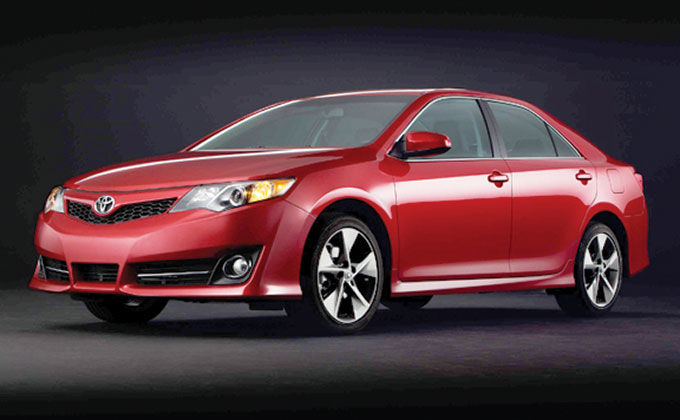Looks Aren't Everything
by Jim Corbran

The 2012 Toyota Camry
If I had a nickel for every automotive journalist who called the Toyota Camry “boring,” I could retire comfortably from this lucrative job. Many car wags think if a car doesn’t look “sexy” it’s not worth looking at. They don’t say it isn’t worth buying, it’s just not worth looking at. All I can say to that is, if your life is so pathetic that your car has to look “sexy” (and just how does a car look sexy anyway?), it may be therapy time.
I’d say the car-buying public must agree with me, as the Toyota Camry, in its many guises over the years, has always found itself at or near the top of the automotive sales charts, and has also, until recent corporate-wide problems have crept up, been at or near the top of quality and reliability charts. Even the journalists who in one sentence call the car boring, in the next sentence can’t really think of a good reason not to buy one.
It’s not just the recent spate of recalls which has Toyota officials sweating bullets over the success (or failure) of its flagship family sedan. The competition in the segment has heated up with top-quality efforts from Hyundai (Sonata), Kia (Optima), and Nissan (Altima). Not to mention the Yanks with the Ford Fusion, Chevy Malibu, and the Chrysler 200, all of which have improved immensely over past offerings. So Toyota, seeing the handwriting on the wall, has brought a whole new Camry to market. And they’re keeping their fingers crossed.
Let’s look at a little history before getting to the 2012 Camry. Back in 1982 the Camry hit the North American market as a compact four-door sedan and a five-door hatchback, Corona-sized but with front-wheel drive and more upscale in the appointments. It was successful enough to keep in the lineup, and a total re-do appeared in 1986, bigger and better. A station wagon was added while the hatchback was dropped. Station wagons came and went during the Camry’s emergence as a top-selling US nameplate. The last one was seen here in 1995, and it’s not likely there’ll ever be another one. Two-door versions have also come and gone, with the latest versions (a coupe and a convertible) being known as the Solara, which are no longer available.
Which brings us to the 2012 Camry. Available in six versions: L, LE, SE, XLE, and the Hybrid LE and XLE. Pricing starts at $21,955 and tops out at $27,400. All 2012 Camrys are four-door sedans, and all come equipped with a 2.5-liter, four-cylinder engine rated at 178 horsepower, with EPA-estimated fuel economy figures of 25/35 miles per gallon city/highway. The SE and XLE are also available with an optional DOHC 3.5-liter V6 (21/30 mikes per gallon). All have six-speed automatic transmissions. Hybrid models come equipped with a new 2.5-liter, four-cylinder engine and a small high-torque electric motor. The system produces a combined 200 horsepower, and is EPA-estimated at 43/39 miles per gallon city/highway.
Styling of the 2012 Camry can best be described as evolutionary. When you first see it you might think to yourself that it’s not much different at all, but park it next to a 2011 model and you see that’s not the case at all. In the great American tradition of automotive restyles, it’s wider and lower than the previous model. There are also four new colors available, including one called “Attitude Black,” which has a bright blue pigment mixed in to the traditional black. The interior, although nearly identical in size to the 2011 model, manages to squeeze in more passenger space through some seat repositionings and design changes.
I guess that it goes without saying that, barring some major catastrophe, the Camry is likely to march on as one of America’s best-selling cars. And if it does so while still remaining “boring,” Toyota won’t mind at all.
More info at toyota.com.
Read more of Jim Corbran's You Auto Know every other week in Artvoice, and more frequently on Artvoice Daily.
blog comments powered by Disqus|
Issue Navigation> Issue Index > v11n1 (Week of Thursday, January 3) > Looks Aren't Everything This Week's Issue • Artvoice Daily • Artvoice TV • Events Calendar • Classifieds |









 Current Issue
Current Issue